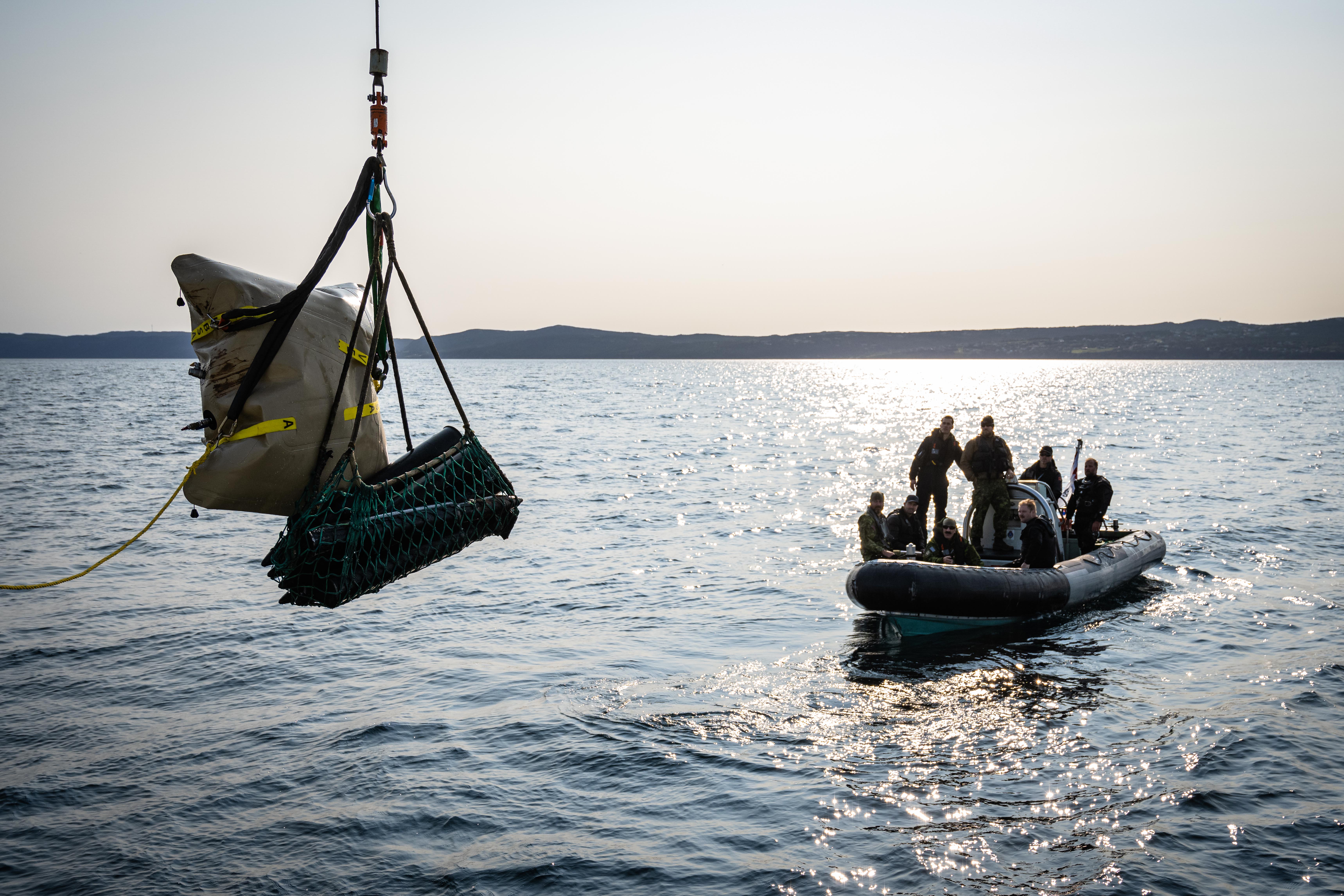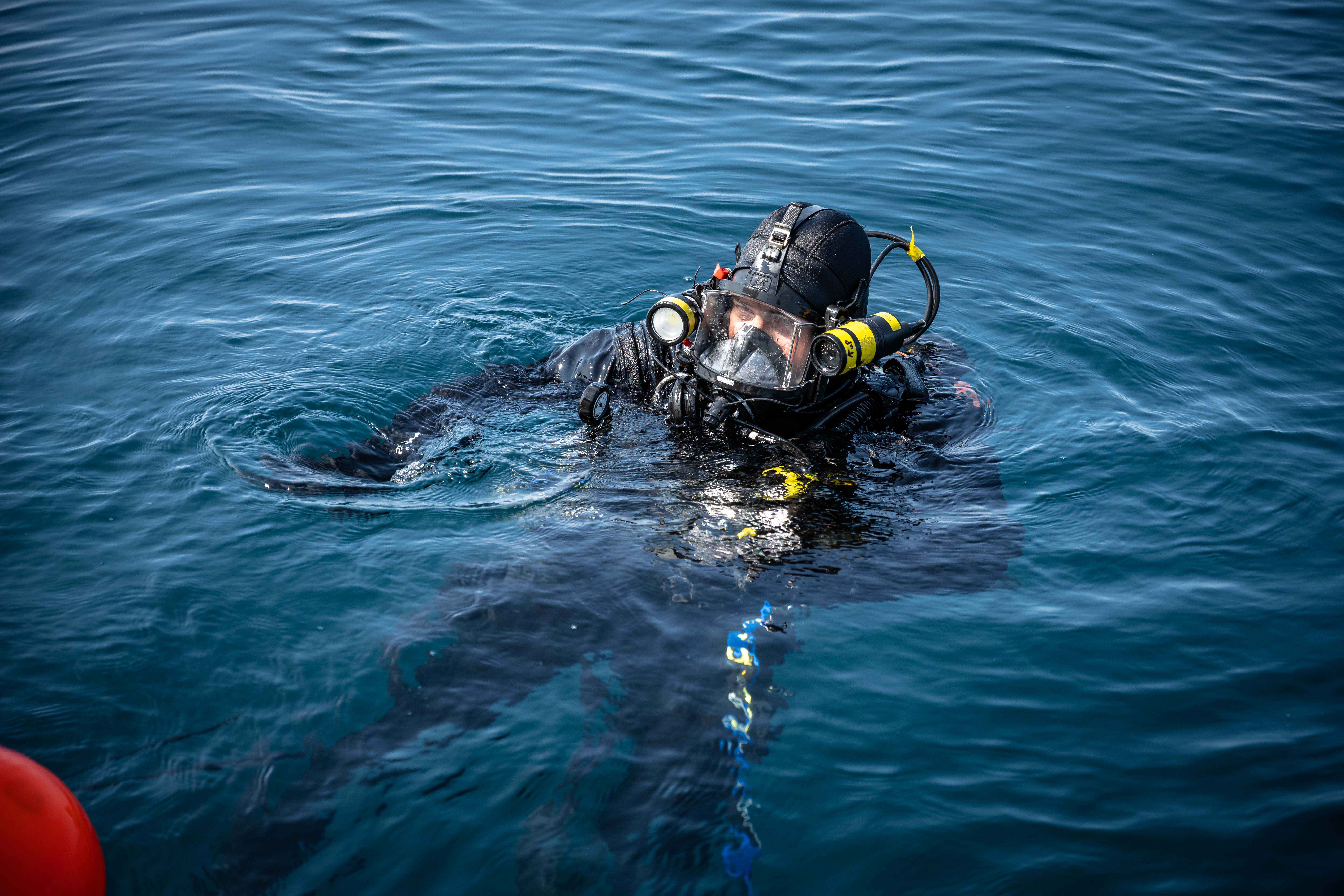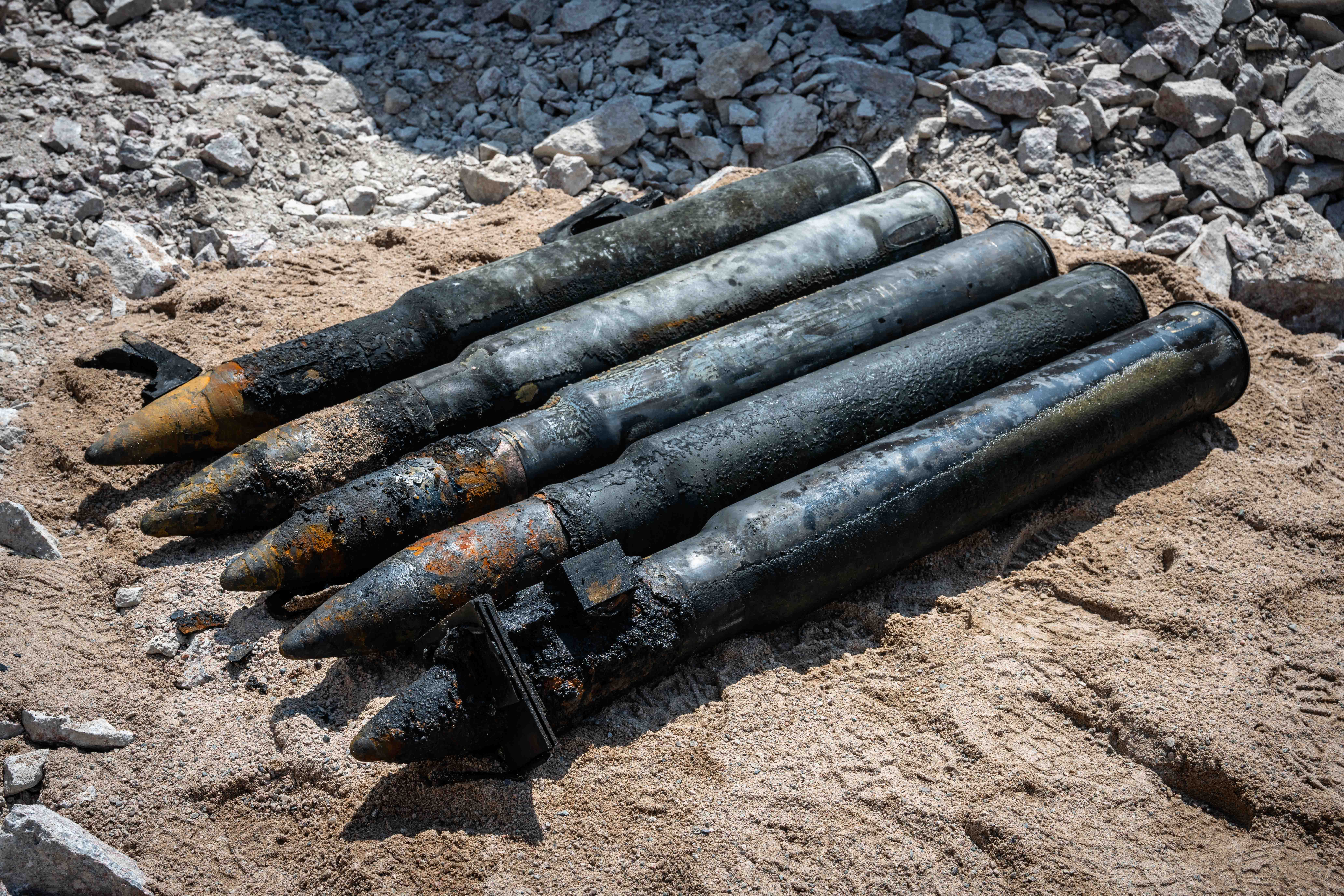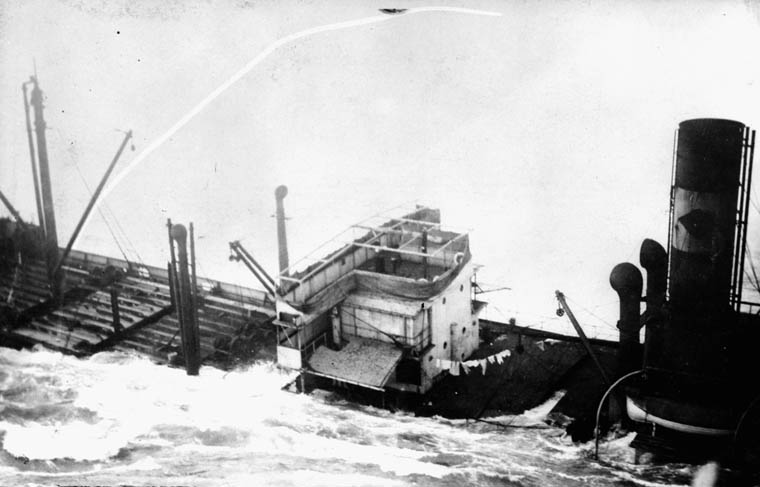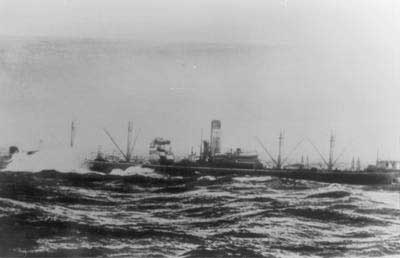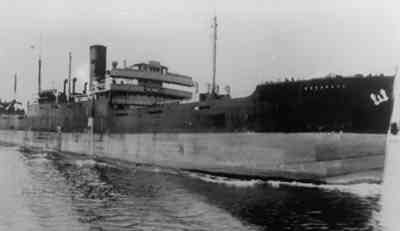Newfoundland shipwrecks cleared of explosives
Navy News / November 5, 2021
Beneath the icy blue water off Bell Island, NL, are the remnants of naval history – four Second World War-era sunken ships.
It’s a favourite spot for recreational divers, but as with any sunken warship, there are dangers associated with unexploded ordnance and ammunition.
This summer, a team of clearance divers from Fleet Diving Units Pacific and Atlantic, and Combat Divers from 4 Combat Engineer Support Regiment, spent three weeks finishing the removal of these items, which began in 2019.
Clearing the site of hazards will allow the Government of Canada to declare the shipwrecks a national historic site.
The sunken relics are freighters Steam Ship (SS) Saganaga, SS Lord Strathcona, SS Rose Castle, and SS PLM 27. In the Second World War, they were equipped with weaponry and explosives for protection against German U-boat attacks during the Battle of the Atlantic. They were tasked with carrying iron ore from Bell Island’s mine to steel mills in Nova Scotia as part of the war effort. Over 60 sailors died when German submarines sunk the ships.
Military divers were tasked with removing the final 60 pieces of 4.75-inch deck gun rounds and small arms from the hulls of the four sunken freighters. A similar operation by clearance divers in 2019 removed and destroyed 140 pieces of ordnance.
For this mission, divers operated from the deck of Her Majesty’s Canadian Ship (HMCS) Moncton, with support personnel from Naval Reserve Unit HMCS Cabot in St. John’s.
“Visibility under water on most days was near perfect, and from a sightseeing angle it is easy to see why the site is such a popular tourist attraction; the colours and sea life around the wrecks are spectacular,” says Master Sailor (MS) Joseph Falletta, Mine Countermeasure Maintenance Supervisor with Fleet Diving Unit Pacific, one of four divers from Maritime Forces Pacific who took part in the mission.
Sea life encountered ranged from cod fish to a family of Minke whales.
“We believe the whales are residents of the area and kept an eye on us throughout the deployment,” he adds.
Before starting their mission, divers were uncertain if they would be handling live ammunition designed to cause maximum damage to enemy warships and submarines. Thankfully, says MS Falletta, none of the ordnance removed was fused. They were still in their original shipping containers located in ammunition lockers underneath the gun decks, notably in the SS Lord Strathcona.
“Once inside the ammo lockers, we encountered very poor visibility due to the rust and debris being stirred up and falling from the deckheads when our [air] bubbles would hit it,” says MS Falletta.
To get the ordnance out, divers attached them to lift bags and floated them to the surface. They were then transferred to HMCS Moncton.
Since the ordnance was required to be disposed of the same day, gun rounds and ammunition were taken to a quarry in Holyrood, with assistance from the RCMP and Royal Newfoundland Constabulary. They were destroyed by Fleet Diving Unit Atlantic Explosive Ordinance Disposal Technicians.
“All four wrecks have been rendered safe from explosives and are now safe for civilian diving,” says MS Falletta. “For me, this mission was a career high. I got to do something really neat and challenging while ensuring our sovereign waters were made safe for people to enjoy.”
The four sunken merchant ships: their stories
SS Saganaga
SS Saganaga was a merchant steamer that was built in 1935 in Glasgow, Scotland and owned by Christian Salvesen & Company of Edinburgh. On September 5, 1942, during the same attack that sank SS Lord Strathcona, German U-boat U-513 fired two torpedoes at Saganaga which sank the ship in three minutes, tragically killing 30 of the 44 crew onboard. Among those lost was Ordinary Seaman Herbert Swain, just 17 years old: a stark reminder of how young some of the merchant sailors were – and of the terrible cost of war. Among those who survived, Ratcliffe Winn, then the 19 year-old Third Officer on Saganaga, gave a compelling firsthand account (English only) of the ordeal in 1960.
SS Lord Strathcona
SS Lord Strathcona was built in 1915 and was owned by the Dominion Shipping Company of Montreal, a subsidiary of the company that owned the Bell Island iron mines. The ship was a 7,335-ton cargo steamer and called Halifax its homeport. On September 5, 1942 the ship was struck and sank by two torpedoes from German submarine U-513 while at anchor in Wabana Roads at 4:46 pm. Though the ship went down in just 90 seconds all 44 crew survived because they had witnessed the earlier attack on SS Saganaga and were prepared to abandon ship. The crew were rescued by a Customs launch that took them to Lana Bay on Bell Island.
SS Rose Castle
SS Rose Castle was built in Sunderland, UK and launched in 1915, the ship’s homeport was also in Halifax. After escaping unscathed from a U-boat attack in October 1942, the Rose Castle’s luck ran out the morning of November 2, 1942, when it was hit and sunk by two torpedoes fired by German U-boat U-518, part of the attack that also sank SS PLM 27. From her crew of 43 only 20 survived and were rescued by Canadian Fairmile motor launches. The crew ranged in age from 16 to 62.
SS PLM 27
Named for the French railway line Paris à Lyon et à la Méditerranée and built in 1922 for a Rouen-based shipping company, ownership of PLM 27 was taken over by Britain in 1940 and the ship was transferred to the Ministry of War Transport. PLM 27 was torpedoed and sunk by German U-boat U-518 in the same attack that sank SS Rose Castle just after 7 am on November 2, 1942 while at anchor off Bell Island. From her crew of 49, 44 survived by swimming to shore but seven were lost. Three of the dead are buried at St. Boniface Anglican Cemetery on Bell Island.
